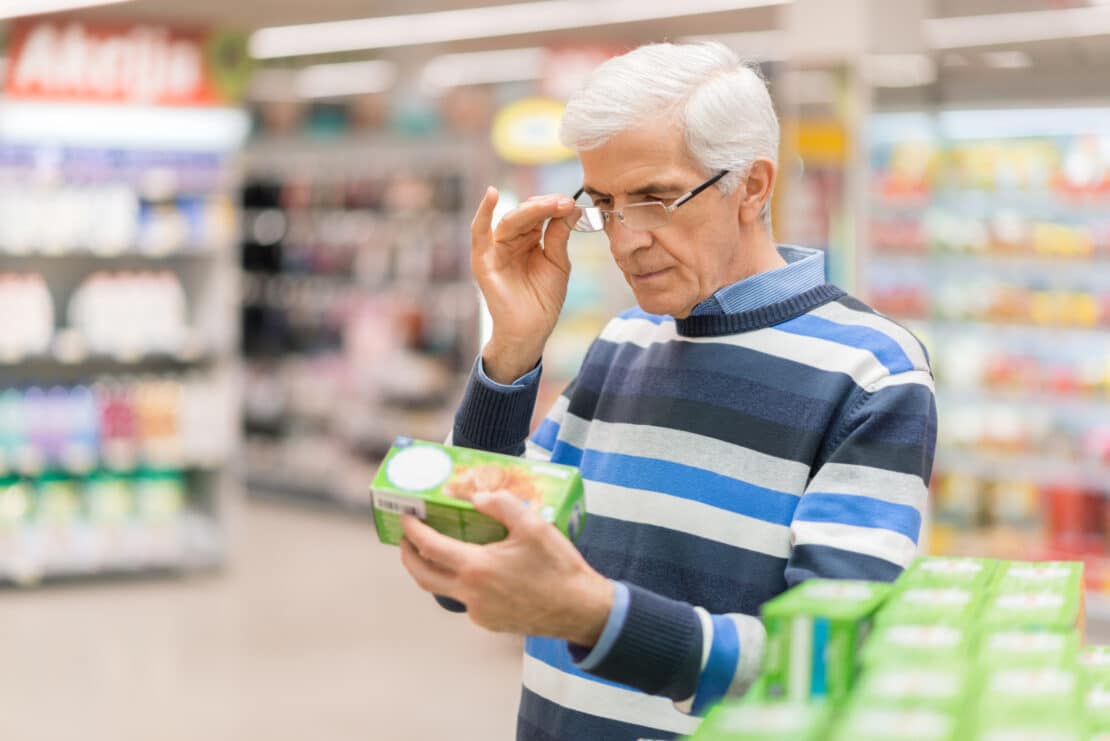In our quest for healthy food, most of us have become careful label readers. We want to know exactly what’s in the food products we buy.
Knowing this, marketers have become experts at creating misleading food labels. They take advantage of loopholes in labeling laws to use weasel words that sound healthy, but actually have little correlation to what’s inside the package.
Here are nine of the most-abused food label words and phrases…
Natural
The FDA has not established a formal definition for the term “natural.” So “natural” on a food label means… Nothing.
Products can be labeled “natural” even if they’re loaded with added sugar or high fructose corn syrup, since those technically come from natural plant sources such as sugar cane, beets, or corn.[1]
A food labeled “natural” may also be full of preservatives or injected with sodium. It can also mean the food was produced using some very unnatural methods, such as irradiation or thermal treatment.[2]
Free Range
Free range is a general claim that implies that a meat or poultry product comes from an animal that was raised in the open air. However, the USDA allows any chicken raised with “access” to the outdoors to be labeled “free range.”
Nowhere does it state that the chickens have to actually go outdoors. The only legal requirement is access. So, many “free-range” chickens spend their entire lives in a cage.
“Free range” is completely meaningless on a carton of eggs. The USDA does not regulate the term for eggs, just for chicken meat.[3]
Grass Fed
It does have a strict legal definition. The USDA defines “grass fed” as “100% grass-based feed over the lifetime of the animal.”
This sounds good. But being grass fed does not mean the animal was not also fed hormones and antibiotics. And the grass could be sprayed with pesticides.
Grass fed implies the animals are pastured. But the label permits animals to be cage or pen raised.
Look for American Grassfed Association and Food Alliance Grassfed labels. Both groups have high standards for animal feed.[4]
Pasture Raised
There is no legal definition. Food makers can use it whenever they want.[5]
Lite
The word “lite” can mean fewer calories, but sometimes not many fewer. There is no standard for that word.
“Light,” on the other hand, has more meaning. If a product says “light,” it must have at least a third fewer calories than its regular counterpart.
But beware: this doesn’t mean it’s actually low in calories.[6]
Another danger is that low-calorie foods and beverages often contain chemical sweeteners such as sucralose, acesulfame potassium, saccharin, or aspartame. These are linked to a many health problems, including obesity.[7]
Made With Real Fruit
This is another claim that is completely unregulated. Products that claim to be made with “real fruit” often contain only a tiny amount of fruit. And it often isn’t even the same kind of fruit that is pictured on the package.
Fat Free
Decades ago, mainstream doctors made fat America’s diet enemy number one. In recent years, researchers have found that many fats are good for you. Trans fats are the major exception.
“Fat free” on a food label has turned into a code word for “packed with sugar.” Food makers compensate for lack of fat by adding corn syrup and other sweeteners to enhance flavor.[8]
No Sugar Added
This is a notoriously misleading term. Be aware that 8 ounces of apple juice and 8 ounces of regular soda have the same amount of sugar (about six teaspoons).[9]
Trans Fat Free
Believe or not, “trans fat free” foods can, and often do, have trans fats.
The FDA allows them to have up to half a gram of this heart-destroying substance per serving.
This labeling fudge is legal in the U.S. but not in other countries. Outside the U.S., “0.5” does not equal “zero.”
When it comes to your diet, you need to be proactive. Learn to decipher what’s healthy. Labels on many food items are not there to help you. They are on products to sell.
Editor’s Note: Discover natural, non-drug methods to transform your health. Read Independent Healing. It’s your best source for unbiased, evidence-based medical information. To subscribe, click HERE.
Related Articles
Many ‘Organic’ Restaurants Actually Aren’t
Why Eating Organic Helps You Sleep Better
Natural Alternatives to the Most-Prescribed Drugs
[1] https://www.washingtonpost.com/lifestyle/wellness/shoppers-are-getting-savvier-to-these-misleading-food-labels/2017/12/12/de40c7dc-d555-11e7-a986-d0a9770d9a3e_story.html?utm_term=.65941ef85f87
[2] http://www.health.com/health/gallery/0,,20599288,00.html#healthy-or-just-hype–1
[3] https://www.prevention.com/food/misleading-food-labels
[4] https://www.prevention.com/food/misleading-food-labels
[5] https://www.prevention.com/food/misleading-food-labels
[6] https://medlineplus.gov/ency/patientinstructions/000336.htm
[7] http://nakedfoodmagazine.com/13-most-misleading-food-label-claims
[8] http://www.health.com/health/gallery/0,,20599288,00.html#healthy-or-just-hype–1
[9] https://www.washingtonpost.com/lifestyle/wellness/shoppers-are-getting-savvier-to-these-misleading-food-labels/2017/12/12/de40c7dc-d555-11e7-a986-d0a9770d9a3e_story.html?utm_term=.65941ef85f87

